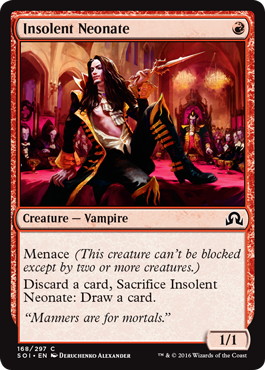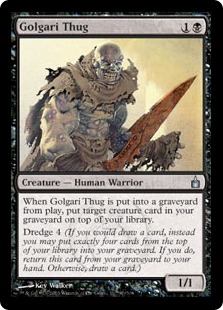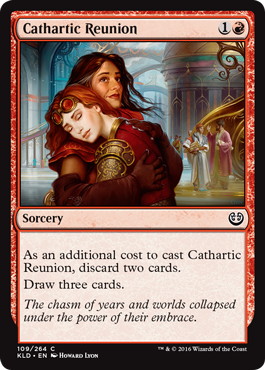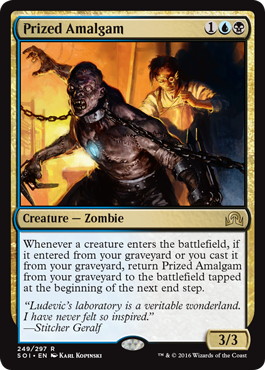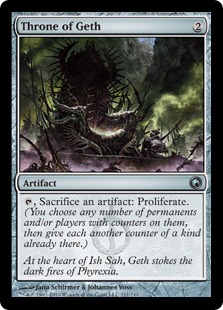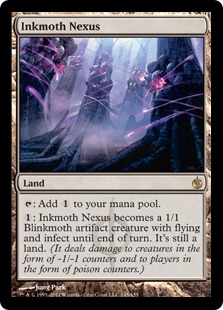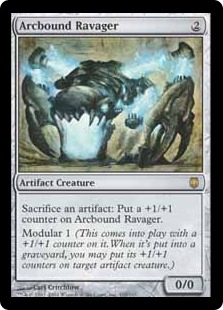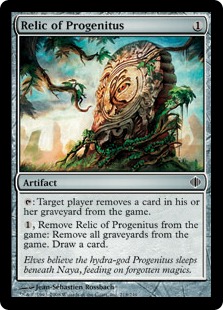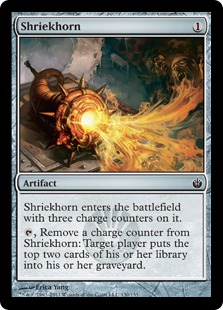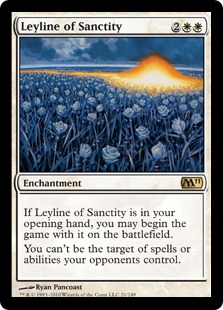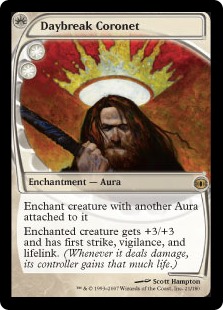Making Mistakes on Purpose
Whenever you start testing a deck, everything is new and all the games feel different. You constantly find yourself in novel situations and must solve problems you haven’t faced before. You make a lot of mistakes, but that’s okay – realizing that you made them just means that you learned something and got better. But there are also choices in the games where you have no idea which option is the correct one, even after the game is over.
For example, should you cast a 《Faithless Looting》 or an 《Insolent Neonate》 on turn 1 when you’re playing Dredge?
Or when you’re casting a 《Cathartic Reunion》, should you discard two Dredgers or one Dredger and a 《Prized Amalgam》?
Those are hard decisions involving many different variables, and it’s impossible to know the right answers when picking up the deck for the first time. It’s made even harder by the fact that there’s a lot of randomness involved.
Discarding 《Amalgam》 has a higher upside, since it means you can get more power into play faster. However, there’s also a higher risk that your Dredge chain breaks and you have to draw cards manually. If that happens, you have stunted your own development and it’s going to take more turns to get a relevant amount of pressure into play. But how do you measure whether the upside outweighs the downside? How do you quantify the odds and the potential impacts?
The 《Reunion》 question is one that I keep struggling with to this day, even though I have played the deck for over two years. The only thing I know for sure is that it’s context dependent – sometimes it’s better to do one and sometimes it’s better to do the other.
This is where the first type of danger comes in.

When you encounter the situation for the first time, you try to channel your inner Sherlock Holmes to deduce the right play. Then you find out that it’s a fairly common scenario, as you keep running into it again and again. Your brain recognizes that it’s the same kind of situation you were in previously, and what most likely happens is that you take the same option you took last time. And then you take that option again and again in similar spots, without ever really questioning if your initial logic was correct. Taking that line becomes a habit.
This happens most commonly in situations where both lines are likely to lead to a win. However, if one line wins 75% of the time and the other wins 85% of the time, it’s quite beneficial to find out which one is better. The problem is, if you rarely get punished for your choice, it’s easy to get lulled into a false sense of security and keep assuming that your choice is the correct one. And the times you do get punished you can always just tell yourself that something unlikely happened, so it was just bad luck, and that the other choice would’ve had its own downsides, and you probably would’ve lost taking that line as well. There’s a lot of excuses you can come up with to make you feel like you were right, and that it wasn’t your fault, and that there was nothing you could’ve done about it.
But there is something you can do about it. If you really want to master a deck, you need to try out both of those lines, and you need to try them out a lot of times. In the short term, it’s obviously better to take the line that you think is more likely to lead to a win. However, in the long term it’s better to sometimes make plays that you think are “wrong” or suboptimal, just to see what happens when you make those choices. You might find out that the other line has some hidden upside that you didn’t even think of, or that it’s just overall more consistent, or that maybe you didn’t need to take the risk that you thought you did. You might find out that with the other line you win even more than you did with the initial one, even though it seemed slightly worse on the surface.
In my mind, even if your initial choice turns out to be the correct one, it’s a mistake in your playtesting process to not try the other one as well.
One of the best ways to find your potential weak spots is to watch other experts of the archetype playing the deck. When you see the other player taking a different line, it can set off a trigger in your head that hey, maybe you should try it too. You can also talk with them to exchange ideas and hear why they came to a different conclusion than you did. Sometimes you both have only one part of the puzzle, and together you can combine them to see the whole picture.
Or, you know, you can just comment on Twitch chat how that player is an idiot because they made the wrong play. Your choice.
The hardest part is that once you gain a lot of experience with a deck, it becomes easy to just dismiss other people’s ideas straight-up and never really consider their merits.
Usually when I notice that I have falsely dismissed an idea, I have had a reason for it that seems plausible at first glance. “That plan doesn’t work because blah blah blah.” But often the player with the new idea has found a way to deal with whatever the “blah blah blah” part happens to be that time, so my original logic doesn’t hold.
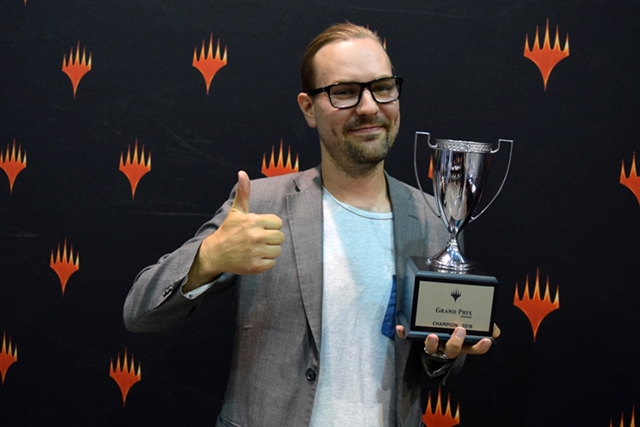
Image Copyright: Wizards of the Coast
As an example, when Lauri Pispa told me that he was going to play 《Hardened Scales》 at Grand Prix Prague 2018, I was like “yo dawg, don’t do it, the deck is inconsistent and fragile and plays too many cards like 《Sparring Construct》 that don’t do enough on their own.” I had tested the deck earlier and found it to be quite uninspiring. Little did I know that the lists had changed since the last time I played with it.
The worst offender, 《Sparring Construct》, had been cut from the deck and replaced by 《Animation Module》, which is simply a powerhouse that acts both as a payoff and as an enabler. It makes the deck much more robust and better suited to grinding long games.
Another thing that had changed was the land base.
《Phyrexia's Core》 made exile removal like 《Path to Exile》 much worse against 《Hangarback Walker》, and 《Ruins of Oran-Rief》 is as close to another copy of 《Hardened Scales》 as a land can possibly be. The reasons why I thought the deck was bad simply didn’t apply anymore, and Lauri proved me wrong by winning the whole GP.
There’s still one card left in the deck that I don’t like: 《Throne of Geth》.
If fans of the deck can find something good to replace that one as well, I believe it might become the best deck in the format.
Overpractice
As you keep playing the new deck, your win rate keeps improving and you figure out better ways to use your cards, like using 《Blink of an Eye》 to bounce your planeswalker mid-combat, returning a 《Seal Away》 to your hand before a 《Fumigate》, or using a fetchland to bring back 《Bloodghast》 on your opponent’s turn so that the 《Prized Amalgam》 in your graveyard get to dodge a potential 《Ugin, the Spirit Dragon》. You also find better strategies in matchups, like starting to count deck sizes early on in control mirrors to make sure your opponent gets decked before you do. Over time you get more and more familiar with more and more lines, and the a-ha moments tend to get rarer.
Familiarity definitely has its upsides. For example, after you’ve put nine +1/+1 counters on an 《Inkmoth Nexus》 a dozen times, you get into a habit of checking if you have enough artifacts to sacrifice to your 《Arcbound Ravager》 for the poison kill. You know which lines to look for and which cracks in the armor to aim your sword at.
In the beginning you probably consider too many alternatives. There are less lines that you can automatically ignore as bad ones, and less lines that jump out as the default ones. That’s why we play so much slower with a new deck than with a familiar one. Then as time goes on, you get the reverse problem: you don’t consider enough alternatives. You ignore too many options as bad ones.
The point of habits in general is to automatize the easy and common tasks in order to save brain power for new and difficult ones. The problems arise when you automatize a bit too much – when you start aiming your sword at the most common cracks all the time and forget to check if there are unusual but better options available. In other words, you start playing on auto-pilot.
When you reach this stage of familiarity with a deck, you have to start asking yourself whether the plays you’re making are actually the best ones, or just the most common ones. Are there factors in this scenario that separate it from the most common situations? Do the same rules apply in all matchups? Do they apply both on the play and on the draw? Do they apply with this specific opponent’s play patterns?
It’s also easy to fall into a mindset that your deck is always supposed to be playing a specific role. To really master an archetype, you need to find the unconventional game plans as well.
A good example of this is the final match of Grand Prix Birmingham 2017.
Loic Le Briand is playing Burn, which is often thought of as one of the easiest and most linear decks in any format it’s legal in. Popular opinion about the skill intensiveness of Burn is displayed by the SMOrc emojis posted in Twitch chat (Note: SMOrc is an emote from the game streaming platform Twitch. It was originally used when someone was “going face”in Hearthstone). Le Briand’s opponent is Steve Hatto with Black-Green Rock, a deck which is specifically set up to grind long games with cards like 《Tireless Tracker》, 《Liliana, the Last Hope》 and 《Eternal Witness》.
So the paradigm is clear: Le Briand is supposed to try to end the game quickly with the mindless aggro deck, and Hatto is supposed to just try to stay alive until his bigger creatures can get the job done.
Game 1 goes according to script, but if you watch the second game, Le Briand takes the script, throws it in the trash and writes us a new one. He grinds out the Rock deck. With Burn! He disrupts Hatto’s 《Eternal Witness》 and 《Scavenging Ooze》 with 《Relic of Progenitus》, exiles 《Tarmogoyf》 with 《Path to Exile》, kills 《Tireless Tracker》 with 《Lightning Helix》 and even counters a removal spell with 《Boros Charm》.
I think most other players would have been locked into a more aggressive mindset and wouldn’t have considered taking a slower approach in the post-board games. Instead, Le Briand had the plan in place even before the game started, as he sideboarded out some burn spells in favor of the 《Relic》 and the 《Path》.
So don’t get caught into thinking that your deck “always needs to do X to win”, “always needs Y to stabilize” or “always needs to take role Z”. Instead, try to keep an open mind and check your presumptions every once in a while to see if they actually hold true. Rules of thumb are good, but they’re also meant to be broken. Again, one of the best ways to do this is to watch other players playing the same deck.
Doing the Right Thing for Too Long
Another type of mistake is doing something that used to be right for too long. Times change, and so should your play patterns, your card and deck choices, and your opinions on how matchups work. Operating on outdated information is one of the easiest ways to stop winning.
As an example, 《Insolent Neonate》 used to be a staple in Dredge lists, and back when 《Golgari Grave-Troll》 was legal I believe it to have been correct. Back then some people also played 《Shriekhorn》, and I believe it was a mistake. However, recently 《Shriekhorn》 has become popular again and the 《Neonate》 have all but vanished.
Without the 《Grave-Troll》, 《Insolent Neonate》 doesn’t have a high enough number of big Dredge cards to make it consistently better than 《Shriekhorn》. Dredging 6 immediately is obviously better than putting two cards in the graveyard three times. However, putting two cards in the graveyard three times is much better than Dredging 3. Nowadays the average case favors 《Shriekhorn》.
I’m surprised that it took as long as it did for Dredge players to find 《Shriekhorn》 again. It just goes to show the power of habit and how hard it is to reconsider options you have already dismissed once.
Another change that I predict will happen is that Bogles will move away from maindeck 《Leyline of Sanctity》. When the deck and the choice of maindeck 《Leyline》 was really popularized, Jund was everywhere.
Dmitriy Butakov won MOCS 2017 by crushing Jund player after Jund player, with the occasional Grixis Control brew somewhere in between. A full set of 《Leyline》 in the maindeck was a crucial part of his success. I didn’t follow Dan Ward‘s GP win as closely, but I would assume that the 《Leyline》 were quite good at that tournament as well.
However, Jund no longer takes up half of the meta like it did at the MOCS. It’s an oddity now, not a public enemy. If you look at the Modern metagame right now, the most popular decks are Humans, UW Control, Tron and Hollow One. At least to me, 《Leyline》 seems quite weak in all of those matchups. Sure, it stops 《Kitesail Freebooter》 ability and it prevents Hollow One from burning you out with 《Lightning Bolt》. But with 《Faithless Looting》, 《Goblin Lore》, and 《Burning Inquiry》 in the deck it’s not like you’re going to strand a great card in their hand. They’re just going to loot away a mediocre one. Not to speak of the times you draw a 《Leyline》 or two off the top of your deck.
Sure, there are some decks like Burn that the 《Leyline》 are still good against. But even against Burn I don’t know how much help you need when you’re already running a playset of 《Daybreak Coronet》.
A lot of other popular decks don’t care about the 《Leyline》 at all: KCI can simply crack an 《Engineered Explosives》 for 4 during the combo turn, Spirits doesn’t have anything that targets you in the first place and the only thing from BridgeVine that can target you even in theory is 《Walking Ballista》, which they usually cast for 0.
So what exactly are you hoping to accomplish with them?
In Standard the need for renewal and re-inventing is much more apparent than in Modern. A deck that wins a GP one week might be a terrible choice for the next one. If you look at Brad Nelson’s choices, he plays a different deck at almost every Standard GP.
To be fair, for most of us who have jobs it’s impossible to switch decks from week to week and have enough testing under our belts to be proficient with them. We simply don’t have the time (or the skills) for the sheer amount of work it takes to find the next best deck and be on top of the metagame every week. But we can try to not get stuck in old ways of doing things, and to evaluate new inventions with an open mind instead of dismissing them as not good enough.
Conclusion
To conclude, I would like to “misquote” Winston Churchill:
To improve is to change, so to be perfect is to change often.
The original version goes “to be perfect is to have changed often”, but I think it works better this way. The best possible version of you or your deck is not a mountaintop that you can climb on and then just stay there, it’s an ever-evolving dynamic state that requires an insatiable hunger for finding new ways to improve.
Matti
Recommended Items
A Finnish player who won WMCQ and top 8’d in 2016 World Magic Cup as Finland representative.
Finished 28th in Pro Tour Aether Revolt, and missed narrowly one point shy of Gold level in 2016-17 season. Joins Hareruya Hopes in 2017-18 season and will play 2017 WMC as a team captain of Finland.




